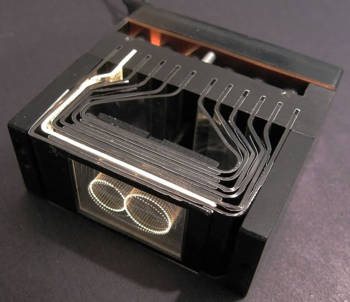Numerik: Difference between revisions
Jump to navigation
Jump to search
No edit summary |
No edit summary |
||
| (One intermediate revision by the same user not shown) | |||
| Line 5: | Line 5: | ||
==GR products using Numerik displays== | ==GR products using Numerik displays== | ||
* [[1123-A|1123-A Digital | * [[1123-A|1123-A Digital Syncronometer]] | ||
* [[1150-A|1150-A 300 kHz, 5-digit frequency counter]], 1963 | * [[1150-A|1150-A 300 kHz, 5-digit frequency counter]], 1963 | ||
* [[1150-B|1150-B 400 kHz, 5-digit frequency counter]], 1965 | * [[1150-B|1150-B 400 kHz, 5-digit frequency counter]], 1965 | ||
| Line 15: | Line 15: | ||
* [[IND-0300]] | * [[IND-0300]] | ||
* [[IND-1801]] | * [[IND-1801]] | ||
* [[Media:GR Exp Numerik 1962-2.pdf|Experimenter | * [[Media:GR Exp Numerik 1962-2.pdf|Experimenter April 1962 describing Numerik Display]] | ||
* [[Media:GB847972A.pdf|GB Patent 847,972 filed 22 Jan 1958]] | * [[Media:GB847972A.pdf|GB Patent 847,972 filed 22 Jan 1958]] | ||
* [https://www.industrialalchemy.org/articleview.php?item=1093 KGM Electronics IND-1803 Numerik Indicator (General Radio)] @ industrialalchemy.org | * [https://www.industrialalchemy.org/articleview.php?item=1093 KGM Electronics IND-1803 Numerik Indicator (General Radio)] @ industrialalchemy.org | ||
Latest revision as of 23:18, 22 October 2024

Numerik displays use edge-lit curved plastic plates to display symbols such as the digits 0 to 9.
They feature prominently in the 1964 Bond movie, Goldfinger, as the 3-digit countdown display in the nuclear bomb that ultimately stops to display "007".
GR products using Numerik displays
- 1123-A Digital Syncronometer
- 1150-A 300 kHz, 5-digit frequency counter, 1963
- 1150-B 400 kHz, 5-digit frequency counter, 1965
- 1153-A 10 MHz, 5-digit frequency counter, 1965
- 1680-A Automatic capacitance bridge
- ...?
Links
- IND-0300
- IND-1801
- Experimenter April 1962 describing Numerik Display
- GB Patent 847,972 filed 22 Jan 1958
- KGM Electronics IND-1803 Numerik Indicator (General Radio) @ industrialalchemy.org
- KGM edge-lit display "Numerik Indicator" model IND-0300 by 50sTransistorRadios @ YouTube (shows partial disassembly)